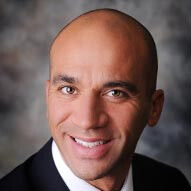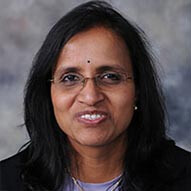Pediatric moyamoya disease (MMD)
The Center for Cerebrovascular Disorders at Children's Health℠ offers children and parents a collaborative group of experts that comprehensively diagnose and treat your child’s cerebrovascular disease, such as pediatric moyamoya disease (MMD).
What is pediatric moyamoya disease (MMD)?
Pediatric moyamoya disease (MMD) is a rare disease in which arteries at the base of the brain become progressively constricted or blocked. Moyamoya stands for “puff of smoke” in Japanese and describes the way the tiny vessels surrounding the blockage look on imaging studies.
These tiny vessels are “collateral vessels,” and they form to carry blood around the blockage to supply the brain with oxygen. Patients with moyamoya are prone to stroke, due to the blockage of blood flow to the brain through both the original arteries that become occluded and the smaller collateral vessels that are fragile and can become blocked or hemorrhage.
Although moyamoya is very rare, it can be inherited or linked to several conditions, including:
The Center for Cerebrovascular Disorders in Children offers children and parents a collaborative group of experts that comprehensively diagnose and treat your child’s cerebrovascular disease, such as moyamoya. We are among the very best in the region at performing the most advanced procedures and therapies for the treatment of pediatric cerebrovascular disease. Each of our primary team members works solely in the pediatric setting with a clinical interest in disorders of the cerebrovascular system.
This program is the only one of its kind in Texas, and one of a handful across the nation. It offers a unique level of expertise in the management and treatment of patients with Moyamoya specific to children and adolescents. We are the only program in Dallas to offer pediatric neurosurgery and neuro-radiology coverage 24 hours a day by specialized, dedicated pediatric providers.
Please email ccdc@childrens.com to schedule an appointment.
What are the signs and symptoms of pediatric moyamoya disease (MMD)?
Stroke like symptoms with weakness on one side of the body, slurred speech, or facial drooping
Involuntary movements
How is pediatric moyamoya disease (MMD) diagnosed?
Moyamoya disease is life threatening, and diagnosis by a pediatric cerebrovascular specialist is critical.
If your doctor suspects Moyamoya disease, diagnostic tests may include:
Computed tomography (CT) scan — This medical test uses X-rays to produces multiple three-dimensional pictures of the brain.
MRI with magnetic resonance angiography (MRA) - This procedure uses radiofrequency to create accurate two- and three-dimensional images of the brain and arteries in the neck and head.
Cerebral angiogram - This test is performed by an interventional radiologist who specializes in the care of children. This is extremely important as children have smaller blood vessels, limitations on dye administration, and specific radiation recommendations.
The cerebral angiogram is a minimally invasive procedure which uses a special contrast, or dye, to observe blood flow in the brain. During the procedure, the radiologist places a small IV or catheter in a blood vessel in the groin, which he or she then uses to reach the blood vessels that supply the brain. With the help of the special contrast or dye, an X-ray machine moves in different angles and takes pictures of the blood vessels. A team consisting of a radiologist, anesthesiologist, radiology technologists, and nurses will care for your child throughout the procedure.
Following the procedure, your child will have to lie flat for approximately four hours due to puncture of a large blood vessel in the groin, as this decreases the risk of bleeding. If needed, your child will receive medication to help him or her relax and rest during this time.
What are the causes of pediatric moyamoya disease (MMD)?
Moyamoya disease is a very rare condition without known cause. It can be associated with other conditions, like neurofibromatosis type I, sickle cell disease and Down’s syndrome.
How is pediatric moyamoya disease (MMD) treated?
There are no medications that can reverse the narrowing of the arteries caused by Moyamoya, but medical management is available to decrease the likelihood of a blood clot forming in one of the small vessels. Your child's treatment team may include:
Neurosurgery
Neurology
Radiology
Hematology
Surgical Intervention
In pediatrics we most commonly perform a procedure that is called Encephalo-Duro-Arterio-Synangiosis (EDAS) or Pial Synangiosis. This procedure takes the superficial temporal artery and attaches it to the surface of the brain where the diseased blood vessels are. In time new blood vessels will grow and expand to better supply the brain with oxygenated blood.
Pediatric moyamoya disease (MMD) doctors and providers
 Brad Edward Weprin, MDPediatric Neurosurgeon
Brad Edward Weprin, MDPediatric Neurosurgeon Rafael De Oliveira Sillero, MDNeurosurgeon
Rafael De Oliveira Sillero, MDNeurosurgeon Amy Hogge, MDPediatric Anesthesiologist
Amy Hogge, MDPediatric Anesthesiologist Darryl Miles, MDCritical Care Specialist
Darryl Miles, MDCritical Care Specialist G. Pride, MDPediatric Neuroradiologist
G. Pride, MDPediatric Neuroradiologist Lakshmi Raman, MDCritical Care Specialist
Lakshmi Raman, MDCritical Care Specialist Dale Swift, MDPediatric Neurosurgeon
Dale Swift, MDPediatric Neurosurgeon